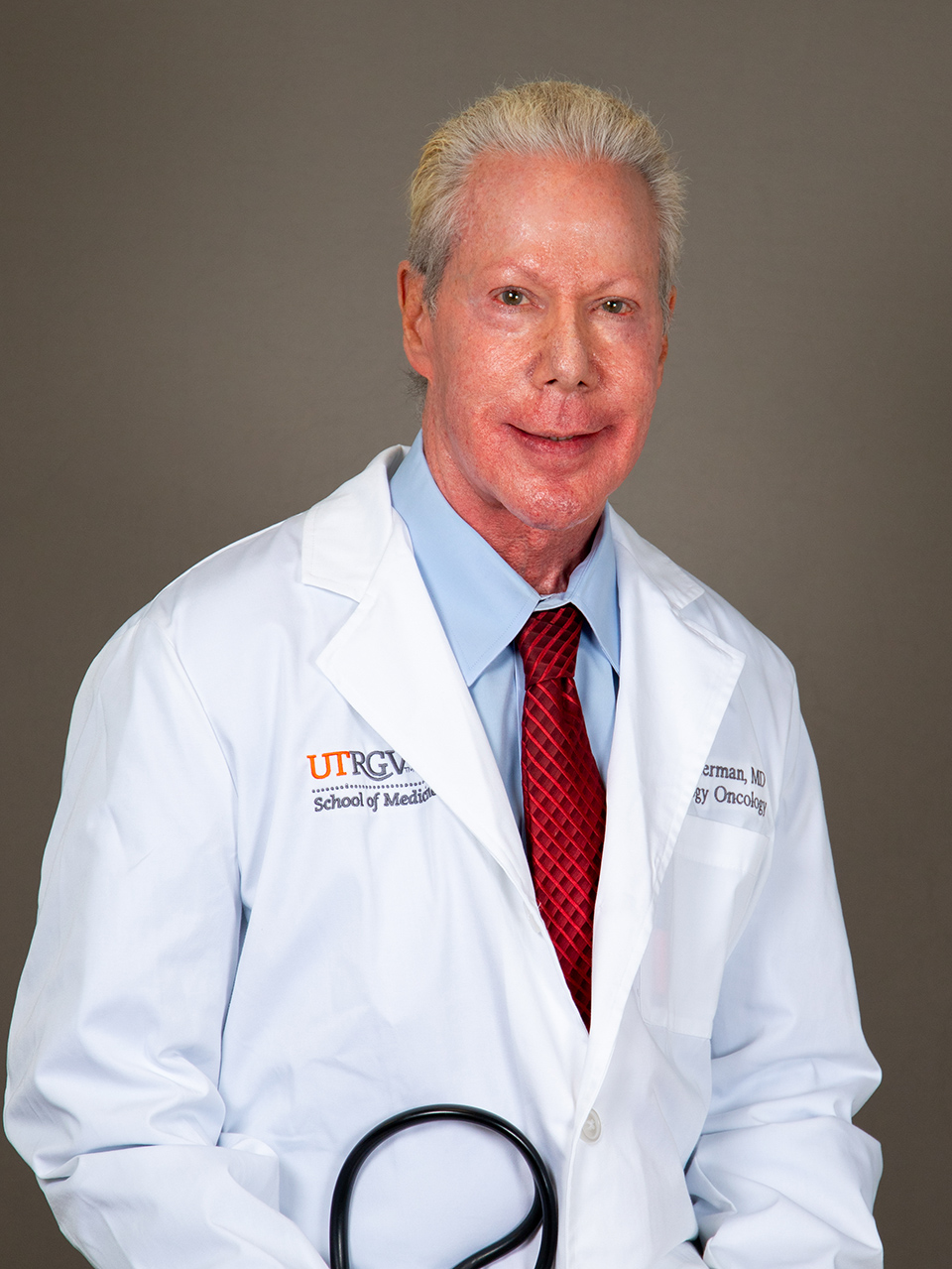By Heriberto Perez–Zuñiga
RIO GRANDE VALLEY, TEXAS – OCT. 9, 2024 – Breast cancer remains one of the most prevalent cancers affecting women worldwide, with an estimated one in eight women facing a diagnosis in their lifetime, according to the American Cancer Society.
However, thanks to advances in screening and treatment, survival rates are improving, making awareness and education critical.
Dr. Terence Herman, medical oncologist and hematologist at UT Health RGV, says Breast Cancer Awareness Month, observed annually in October, is a good time for women in the Rio Grande Valley to take advantage of available screening resources, and to stay informed about the dangers of the disease.
UNDERSTANDING BREAST CANCER
Breast cancer is a condition in which cells in the breast grow uncontrollably, often leading to the formation of tumors that can spread to other parts of the body if left untreated. While it can occur in both men and women, the risk is higher among women.
Symptoms may include lumps in the breast or underarms, changes in breast size or shape, and unexplained pain in the breast area.
“There are several risk factors for breast cancer,” Herman said. “Women who maintain a lower weight, stay active, and limit alcohol consumption can reduce their risk. Other factors, like smoking and late pregnancies, can increase it.”
For those with a family history of breast cancer, Herman advises vigilance.
“For high-risk patients, screenings may need to start earlier,” he said. “Additional methods like MRIs may be necessary to detect abnormalities that a standard mammogram might miss. Early detection is crucial because it significantly improves treatment outcomes and increases the chances of survival.”
EARLY DETECTION
Since the widespread use of mammograms in the 1970s, breast cancer detection has improved dramatically. Herman said that mammograms are critical for identifying the disease at an early stage, significantly increasing the chances of successful treatment.
“Early detection is key. The recommendation is to start mammograms at age 40 and continue every two years afterward,” he said. “The earlier breast cancer is caught, the better the prognosis. Mammograms have greatly reduced the number of women presenting with late-stage disease, and we now have patients surviving because of early intervention.”
The UT Health RGV Cancer and Surgery Center in McAllen, slated to open in 2025, will offer comprehensive care with cutting-edge technology, along with much-needed, advanced treatment options and specialized cancer care for RGV residents, Herman said.
“It's designed to be the center of cancer care for the Valley,” he said. “The Valley is a large place with diverse care needs, and this will be an academic center focused on delivering the highest level of research and treatment possible.”
LIFESTYLE CHANGES
In addition to mammograms, lifestyle changes can also reduce the risk of developing breast cancer, Herman said.
- Healthy habits include:
- Regular exercise.
- Maintaining a healthy weight.
- Avoiding smoking.
- And limited alcohol consumption.
“These all contribute to reducing the risk of breast cancer, and we’re seeing that breast cancer, which once had a lower incidence rate among Hispanic women in the Valley, is now just as common here as elsewhere,” Herman said. “But with regular screening, lower-stage breast cancer is curable.”
For more information on cancer care or to schedule an appointment with a specialist, visit UTHealthRGV.org.
ABOUT UTRGV
The University of Texas Rio Grande Valley (UTRGV) was created by the Texas Legislature in 2013 as the first major public university of the 21st century in Texas. This transformative initiative provided the opportunity to expand educational opportunities in the Rio Grande Valley, including a new School of Medicine and a School of Podiatry, and made it possible for residents of the region to benefit from the Permanent University Fund – a public endowment contributing support to the University of Texas System and other institutions.
UTRGV has campuses and off-campus research and teaching sites throughout the Rio Grande Valley including Brownsville (formerly The University of Texas at Brownsville campus), Edinburg (formerly The University of Texas-Pan American campus), Harlingen, Weslaco, McAllen, Port Isabel, Rio Grande City and South Padre Island. UTRGV, a comprehensive academic institution, enrolled its first class in the fall of 2015; the School of Medicine welcomed its first class in the summer of 2016, and the School of Podiatric Medicine in the fall of 2022.


